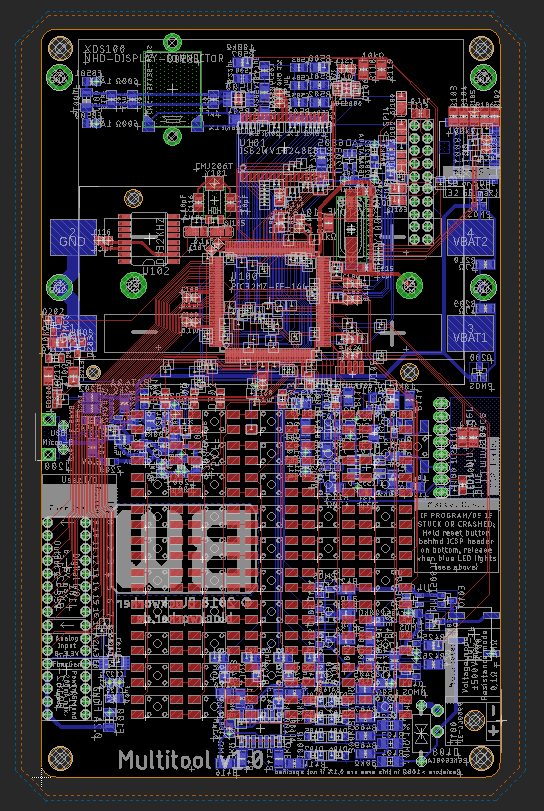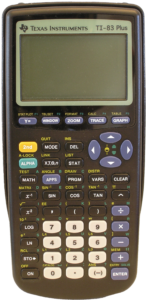It’s been quite a while, but it’s time to share the circuit design with you all. But first, here are some changes I made to the specs listed in the initial post:
- Switched the screen from the -CSXN-CTP model to the -CSXN-T version: (worse) resistive touch instead of capacitive, but significantly cheaper
- Voltmeter now capable of -500V to +500V input (instead of 0-300V), which also makes it suitable for AC!
- Added Ohmmeter functionality for measuring resistance
- Added user-friendly reset circuit (in case the controller crashes)
- Added brightness, temperature and humidity sensors (because I can)
- Extended unused controller pins to a header for external connections:
- 18 digital I/O pins
- 4 analog inputs
- 2 analog outputs (using an additional DAC chip)
With that out of the way, let’s get to the point.
One of the first things I chose is the board size: 150 x 92 mm. The width is based on the size of the screen assembly, and the height is chosen to feel nice when handling it (and also to fit the keyboard without putting the buttons too close together).
Then, with my planned features in mind (and coming up with new ones all the time), I downloaded Autodesk EAGLE (student edition) and started creating a schematic and figuring out the exact specifications and functional requirements of the system. After that was done, I started laying out and routing the PCB. After a few months of work, I ended up with this 4-layer work of art mess:

I will go over the entire schematic and PCB design in detail, but it won’t fit in a single post. Therefore I will split it into multiple posts and link them here:
Also, if you want to look at the EAGLE design files yourself, here they are:
Be aware that you (probably) can’t open these files in the free version of EAGLE. I’d love to offer a “free-compatible” version of the design, but unfortunately it exceeds all three limitations of the free version: schematic sheet count, PCB layer count and maximum PCB area.
However, if you are a student (like me), you can get the student version of EAGLE for free, which is functionally equivalent to the premium version.
